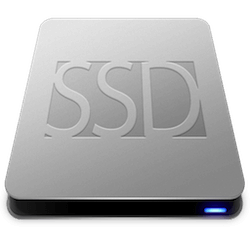 Secondary memory, as we computer scientists call it, is one of the most neglected aspects of computing. Up until a few years ago, if you had enough space, that’s all that mattered. Even the transition from ATA to SATA wasn’t as phenomenal a shift, as was brought along with the introduction of the SSD. Before Solid State Drives (SSDs), Hard Disk Drives (HDDs) came in a variety of shapes, sizes and connectivity options with the block of mechanically driven pieces essentially the same inside. Data was stored on metal disks which rotated at high speeds (5600 rpm or 7200rpm).
Secondary memory, as we computer scientists call it, is one of the most neglected aspects of computing. Up until a few years ago, if you had enough space, that’s all that mattered. Even the transition from ATA to SATA wasn’t as phenomenal a shift, as was brought along with the introduction of the SSD. Before Solid State Drives (SSDs), Hard Disk Drives (HDDs) came in a variety of shapes, sizes and connectivity options with the block of mechanically driven pieces essentially the same inside. Data was stored on metal disks which rotated at high speeds (5600 rpm or 7200rpm).
Reading and writing from such disks meant that a mechanical head would lower itself on the disk and detect the magnetic flux in order to interpret what the saved electrical charge represented as data. SSDs changed that with a SATA interface connecting to flash memory. They’re fast, reliable and have a longer life. But that’s just the icing we’re tasting, let’s go check out the whole cake.
[table id=36 /]
The pros and cons of owning either HDD or SSD?
First, HDD are pretty good if you’re reading the same data again and again (meaning same data in the same place). They’re just as good if you’re reading sequentially which means data is located or scattered over a sequence of memory spaces. Random access is much more resource intensive, making the head read from place to place and sector to sector slowing things down.
This can be a real problem when accessing different parts of the same CAD drawing, because the pieces are stored in random locations. Since SSDs don’t have any moving parts, any kind of read/write functions produce pretty much the same effect, hence speeding things up by more than just a notch. All kinds of application open faster and data retrieval in times will get a significant reduction.
Let’s go over a few advantages of SSDs over conventional HDDs. They have lower latency meaning a lower response time for read and write requests. Due to no moving parts, they operate silently and handle shock and vibrations much better than a block of metal containing metal parts moving at high speeds will. Power consumption is much lower compared to HDDs and the lower latency allows faster loading and running of applications.
What to look for in the best CAD SSD?
Now before we move onto comparing commercially available drives against CAD SSDs, let’s look at what we should be looking for in the best CAD SSD products.
Warranty
The first thing is the warranty, because we want to focus on reliability. I’m starting with warranties because pro disks have 5 years where as commercial disks have 3 years. Most manufacturers give ratings to their drives but the thing you should look for is the MTBF (Mean Time between Failures) measured in millions of hours.
Price
The price is another important factor with SSDs costing about 0.68 USD for each GB (HDDs are 0.05 USD). Wear-leveling is a mechanisms that spreads the natural wear (& tear) of read and write requests as evenly as possible so to save up on drive lifeline. Also, migration and monitoring tools also come in with many drives and are almost always handy.
Compatibility
The last thing to look for should be the head and fitting. 2.5″ drives are more suited for laptops with the kind of head that is compatible with mobile design. 3.5″ drives are the ones most suited for desktops, with adapter extensions available with some drives, but not all. Now let’s go ahead and see what we have to work with.
Top 3 Best CAD SSD Products
Samsung SSD 840 Pro Review – Most Affordable!
First up, Samsung SSD 840 Pro. 256GB also available in 512GB, reads 510MBps and writes at 486MBps with the manufacturer’s assurance of such optimal performance even when the disk is full. To up the ante, they also state that this performance will be maintained in sustained read/write events as well as in random selection where the data is scattered all over the drive, something very easily determined by disassembling and rebuilding assemblies which would call all bits and pieces. In terms of read and write sustainability, anything less than or up to 30GB a day will ensure a life of at least a century. This drive also comes with a 5 year warranty!
[easyazon_link identifier=”B00P736UEU” locale=”US” tag=”cad1208-20″]
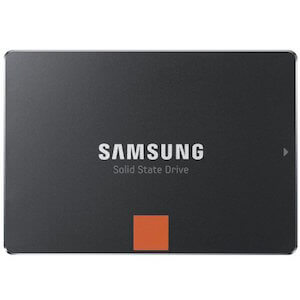 Click here to see reviews and prices for the Saumsing SSD 840 Pro on Amazon.com
Click here to see reviews and prices for the Saumsing SSD 840 Pro on Amazon.com[/easyazon_link]
Intel SSD 520
Second in line for review is the Intel SSD 520 available throughout 60GB to 480GB. With a SATA 6GBps interface and a SandForce controller, this disk delivers a whopping 520 MBps of read and write at the very minimum with a MTBF of 1.2 million hours meaning on average it’s going to experience a failure once after every 137 years (I’ll be sure to warn my grand kids). A 4K video’s random read/write clocks in at 21/72MBps with one of the lowest access times across the industry of ~0.1758ms. This access time can be directly validated by launching SolidWorks which is ready and good to go in under 3 secs.
[easyazon_link identifier=”B006VCP7NQ” locale=”US” tag=”cad1208-20″]
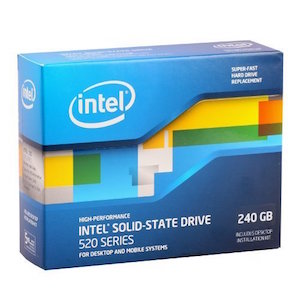 Click here to see reviews and prices for the Intel SSD 520 on Amazon.com
Click here to see reviews and prices for the Intel SSD 520 on Amazon.com[/easyazon_link]
OCZ RevoDrive 350
Next up is the OCZ RevoDrive 350 which starts from 240GB all the way to 960GB. With the PCI gen2x8 interface, this is also a Multi Level Cell (MLC) flash memory with a 19nm Toshiba NAND chip. 50GB/day is guaranteed under a 5 year warranty with random 4K read and writes clocking in at 1,35,000 and 1,40,000 IOPS and maximum read/write speeds of 1.8GBps/1.7GBps. This is the most elite SSD coming from the manufacturer and is intended for high end 3D visual and graphics applications coupling over to extreme gaming. The price will obviously be over the top but that’s what gives when you want the best.
[easyazon_link identifier=”B00JXKIEMO” locale=”US” tag=”cad1208-20″]
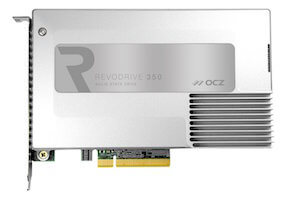 Click here to see reviews and prices for the OCZ RevoDrive 350 on Amazon.com
Click here to see reviews and prices for the OCZ RevoDrive 350 on Amazon.com[/easyazon_link]
Conclusion
For the SSDs reviewed above, all three of them are quite closely matched. Nonetheless users switching from HDD to SSD will feel a remarkable jump in performance. Like most computer components the best CAD SSD is quite a subjective matter. It is quite obvious that every SSD will suit different users performing different tasks. For users not willing to compromise performance can go for the highest read/write capability. Similarly users looking for reliability can choose the one with the highest MTBF.
We highly recommend the [easyazon_link identifier=”B00P736UEU” locale=”US” tag=”cad1208-20″]Samsung SSD 840 Pro[/easyazon_link] due to its affordability and high reliability.

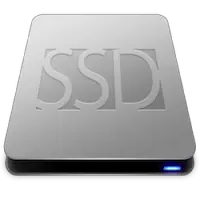

Comments
2 responses to “Best CAD SSD Reviews for 2018”
[…] Best CAD SSD (harddrive) […]
[…] The widely accepted idea is to have both SSD and HDD since SSDs are extremely fast at loading and transferring data to RAM compared to HDDs. For this very reason people dedicate their SSDs to windows, softwares and projects they are currently working on whereas things which don’t fall in daily routine are kept in HDDs. All I ask of you is to try using SSD one time, trust me you will never go back to using HDDs. Check out this article on reviews of the best SSD for CAD. […]